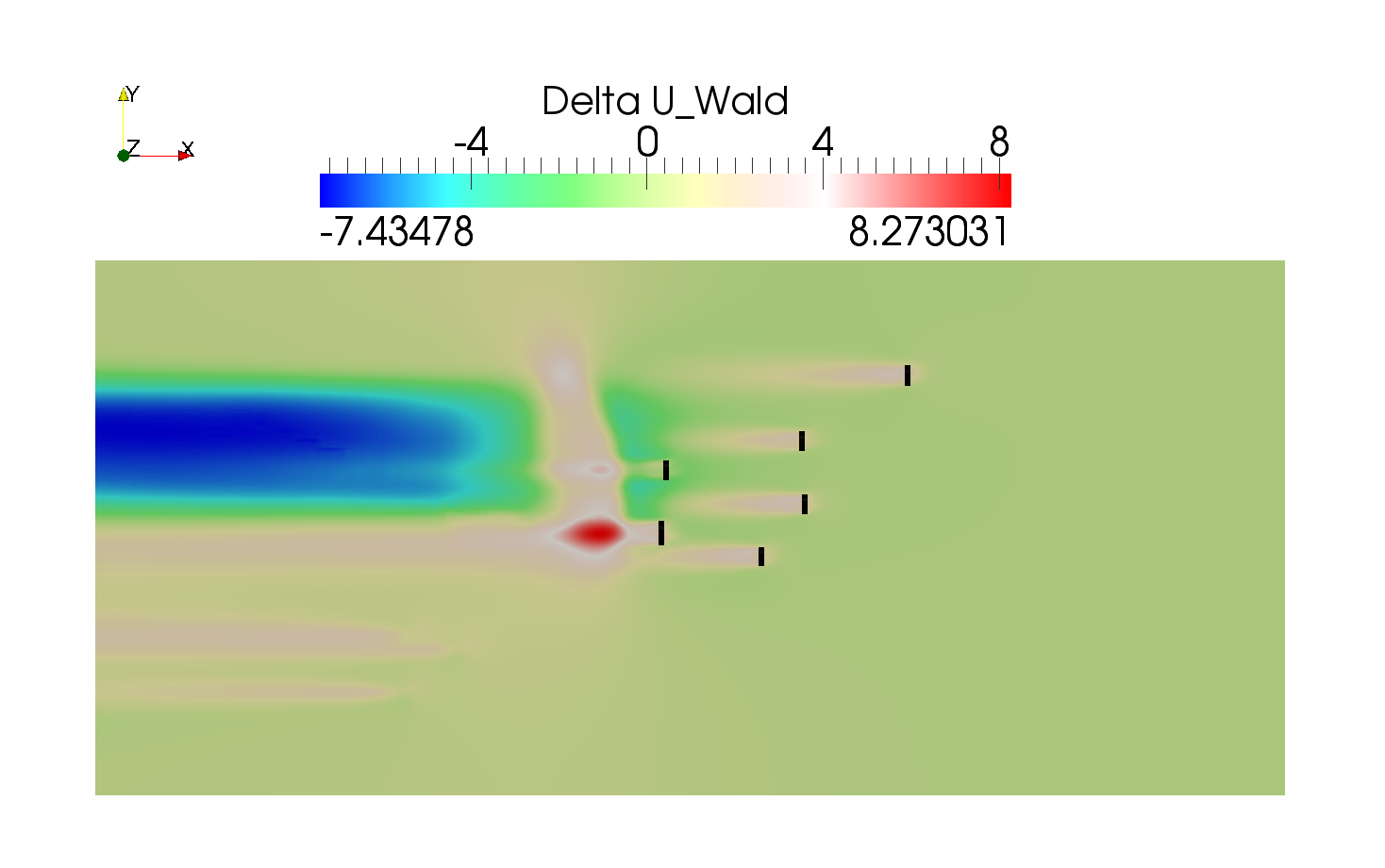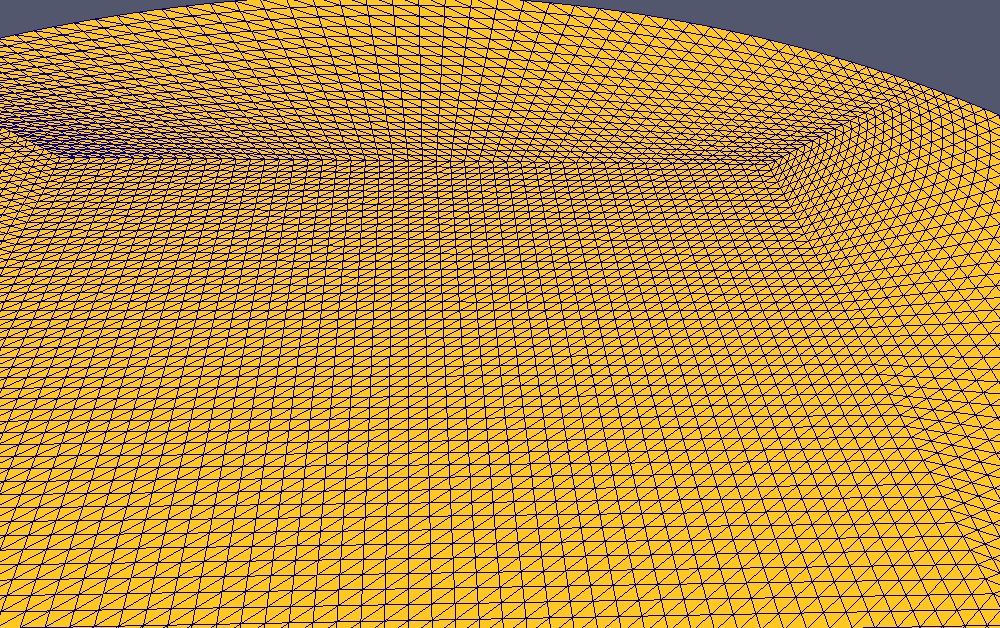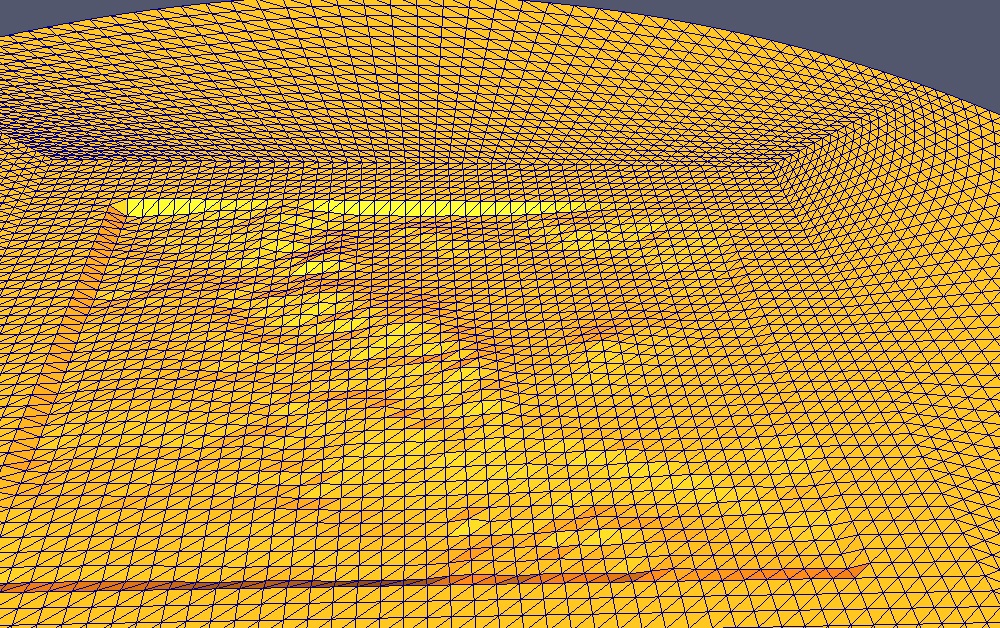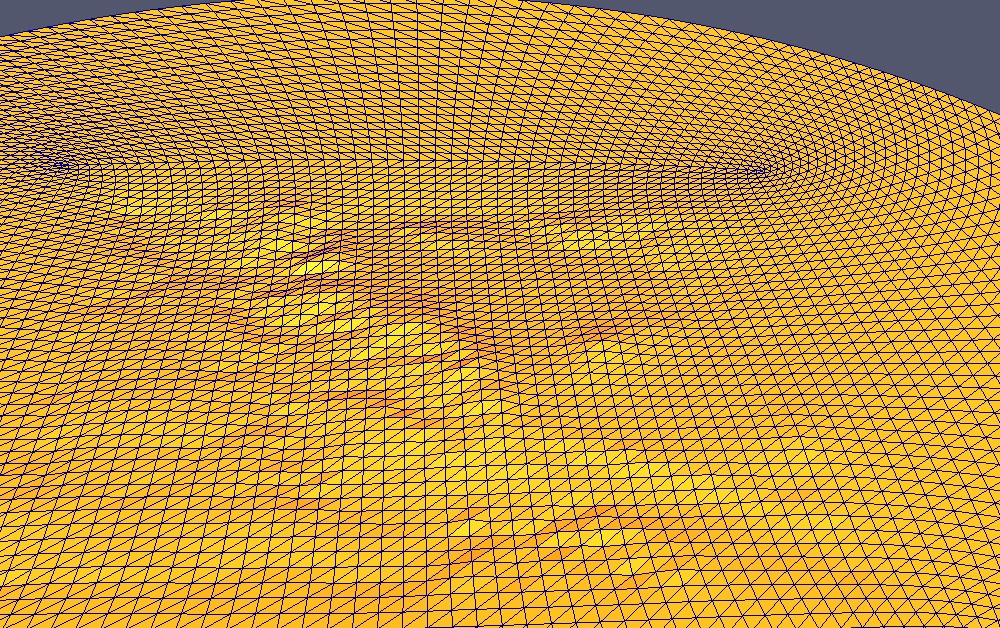A number of add-ons have been developed for site assessment: for example, a mesh generator for complex terrain and the simulation of entire wind farms. The meshes, using which numerical simulations discretize the space, are vastly important to the result of the simulations. Fraunhofer IWES offers a structured mesh generator for site simulations, which is freely available to download. In the meantime, many functionalities have been added to the tool, one important one being that any 2D meshes can be used as the base mesh. They do not necessarily have to be structured, as the mesh generator is no longer based on blockMesh – hence its name “terrainMesher”. One part of the base mesh is first projected onto the terrain in STL format. Fraunhofer IWES offers a terrainMesher for site simulation:
Then the rest of the mesh is dynamically relaxed, which prevents excessive discontinuities and thus improves the resulting cell quality. The resulting 2D mesh is expanded to a 3D mesh of a given height. The user can set the height of the first cell via either the base or the desired grading. This is outwardly adjusted so that the maximum aspect ratio is not exceeded. The vertical splines are also dynamically optimized so that they stand orthogonally on the terrain and maintain maximum distance from one another.
Based on the wind farm optimization code from Oldenburg University “FLaP” and the open field equation solver “OpenFOAM”, Fraunhofer IWES has developed the wind farm optimization software “flapFoam”. It projects the wakes of individual turbines into a simulated or modelled wind field. The wind farm is then laid out according to the best possible result on the basis of various optimization criteria and methods.
In addition to various wake models, the program also has the ability to compute the wakes of the individual wind turbines using CFD. The code is at an advanced stage of development.



